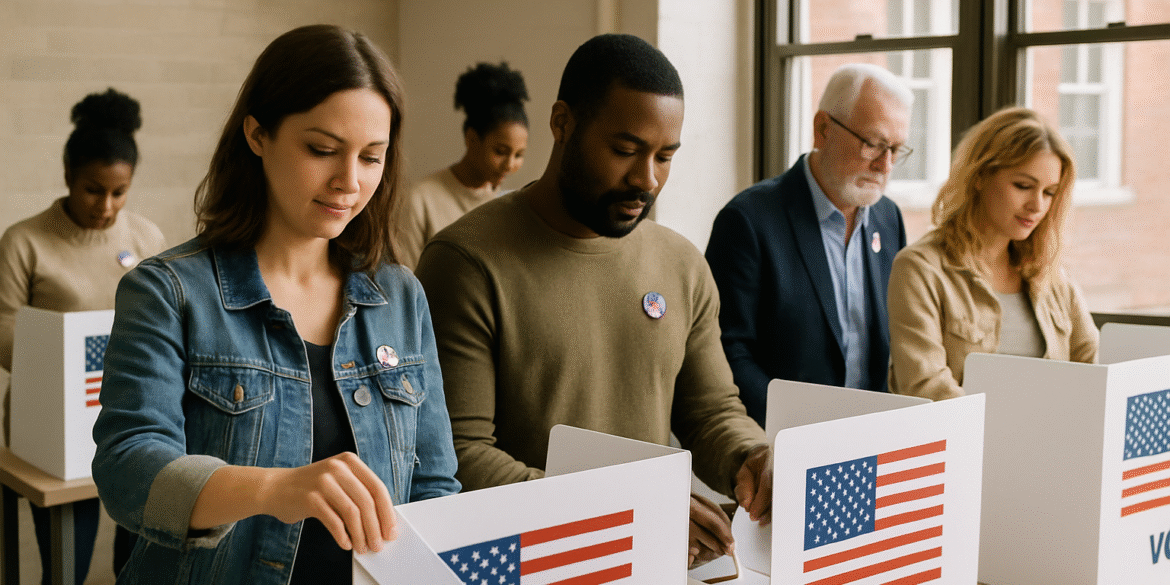California lawmakers have introduced a set of new voting reforms designed to increase voter turnout in Southern California, particularly in underrepresented communities. The changes, including automatic voter registration and expanded mail-in voting, are expected to reshape the state’s political landscape ahead of the 2026 midterm elections. The legislation, signed into law last week by Governor Gavin Newsom, marks a bold step toward addressing low voter participation rates, particularly in Los Angeles, Riverside, and San Bernardino counties.
Main Body
The new laws come at a time when voter engagement has been a major point of concern in California, where large portions of the population remain disengaged from the political process. According to data from the Public Policy Institute of California (PPIC), voter turnout in Southern California has historically lagged behind other regions, particularly in Latino and African American communities.
Key Aspects of the New Legislation
-
Automatic Voter Registration
California residents who interact with the Department of Motor Vehicles (DMV) or other state agencies will now be automatically registered to vote unless they opt out. This system, which has been in place since 2016 through the California Motor Voter Program, will now be expanded to make it easier for voters to stay registered. New provisions aim to reduce barriers to voting, especially among young people and immigrants. -
Extended Voting Hours
Polling stations will now remain open two additional hours in areas with historically low turnout. This change is intended to give working individuals and those with busy schedules a better opportunity to cast their ballots on Election Day. Local government offices will also remain open for voter registration on weekends leading up to the election, providing greater access to the voting process. -
Expanded Mail-in Voting
California will continue to send mail-in ballots to every registered voter, including those who have not voted in recent elections. This move builds upon the successful implementation of universal mail-in voting during the 2020 and 2022 elections. It aims to make voting more accessible, especially for voters concerned about in-person voting due to ongoing health concerns related to the pandemic.
Governor Newsom expressed his support for the legislation, stating, “We are committed to making sure that every voice in California is heard, especially those in communities that have historically been excluded from the democratic process.”
Impact on Southern California
Southern California, with its diverse population, has often seen significant disparities in voter participation. Areas like East Los Angeles, Compton, and parts of Riverside County, where minority communities make up a large portion of the population, have been especially impacted by low turnout. The new laws are expected to make a noticeable difference, as advocates argue that when voting is more accessible, it leads to a more representative government.
Political analysts believe that these reforms could have a significant impact on upcoming elections in the region. “With higher voter participation, we might see shifts in local races that have traditionally been dominated by one party,” said Maria Garcia, a political strategist based in Los Angeles. “These reforms could fundamentally change the dynamics of Southern California politics.”
Challenges and Criticisms
While the new laws have garnered widespread support, particularly from civil rights groups and election reform advocates, they have also faced opposition. Critics, primarily from conservative groups, argue that the measures could lead to voter fraud and undermine the integrity of elections. Some also question whether automatic registration could inadvertently enroll ineligible voters.
However, proponents of the legislation point to studies from other states with similar reforms, which have not shown an increase in voter fraud. They also highlight the importance of making voting more inclusive and accessible, particularly in historically disenfranchised areas. For example, Oregon, which implemented automatic voter registration in 2016, has seen no significant rise in fraudulent voting.
Conclusion
California’s move to reform its voting system is a significant step toward creating a more inclusive democracy, particularly in Southern California, where voter turnout has traditionally been lower. By addressing barriers to voting—such as registration issues and limited access to polling stations—the state hopes to ensure that every eligible voter has a chance to make their voice heard. As the 2026 midterm elections approach, these changes may prove pivotal in reshaping the political landscape of Southern California.
By: Elle Tran

